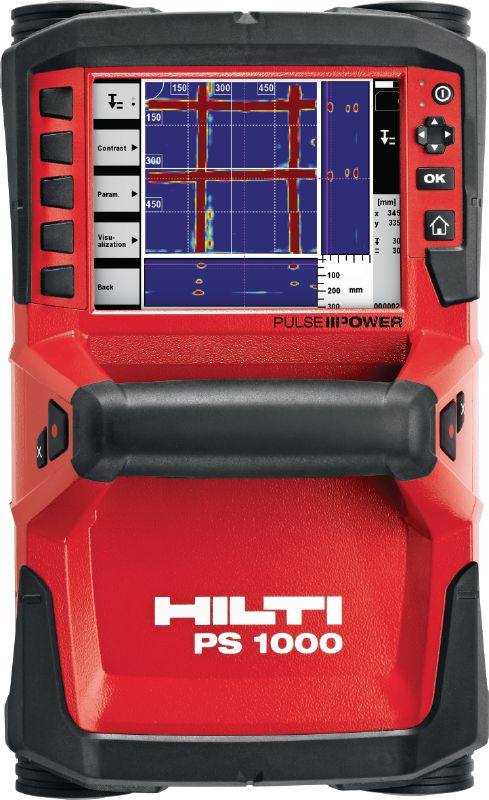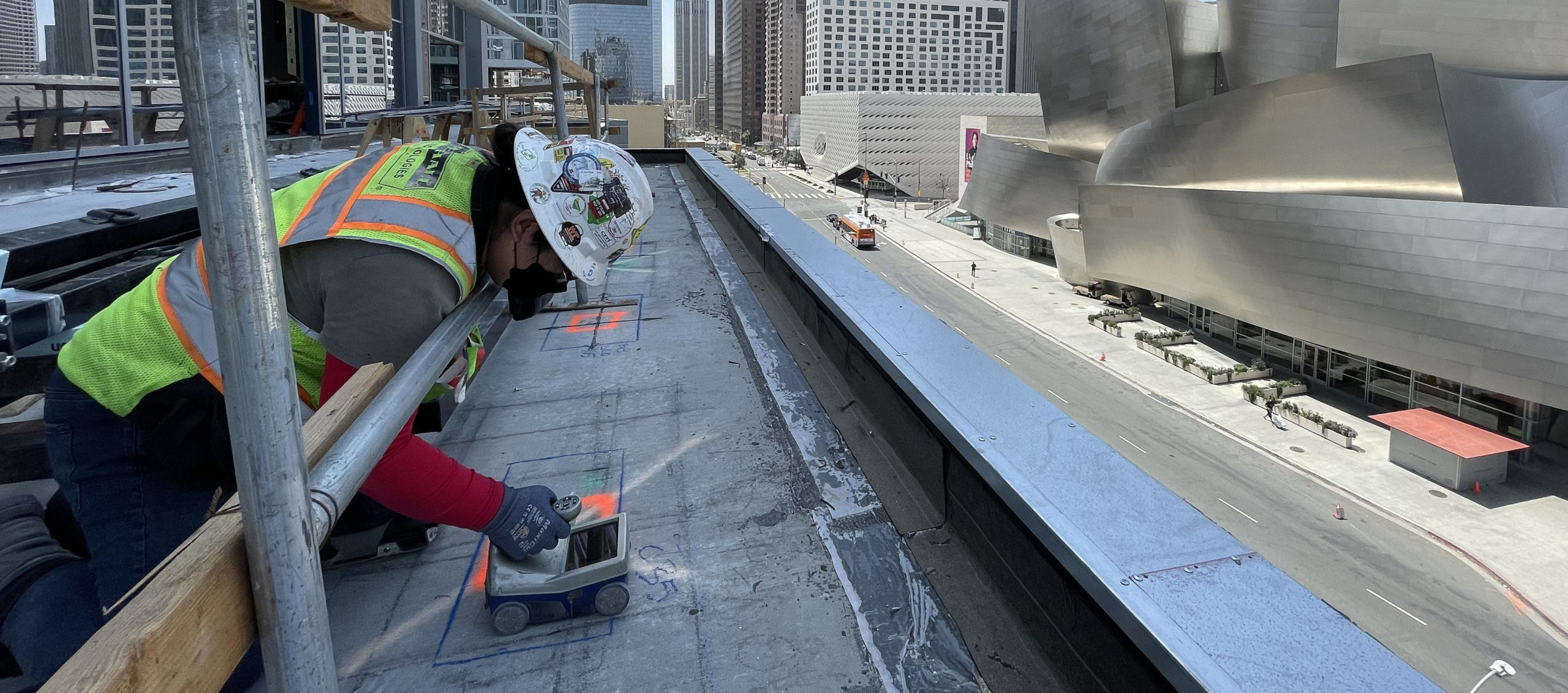The Ultimate RainierGPR Concrete Scanning Remedy Described
The Ultimate RainierGPR Concrete Scanning Remedy Described
Blog Article
Harness the Strategic Side of Concrete Scanning for Unparalleled Project Success and Quality Guarantee
In the realm of modern-day building and facilities advancement, the application of concrete scanning technology has become a critical tool for guaranteeing job success and keeping top quality criteria. This cutting-edge method uses a strategic edge by supplying crucial understandings into the architectural stability of concrete components, thereby enabling notified decision-making throughout the task lifecycle. By delving into the depths of concrete compositions and revealing covert abnormalities, stakeholders can proactively resolve prospective dangers, simplify operations, and optimize resource allocation. The true power of concrete scanning exists not just in its capacity to boost task results but additionally in its capability to transform conventional practices, establishing a new criteria for accuracy and effectiveness in the building and construction industry.
The Importance of Concrete Scanning
Concrete scanning is a crucial action in construction projects to ensure the safety and integrity of structures. By using numerous scanning modern technologies such as Ground Penetrating Radar (GPR) and electromagnetic induction, building groups can non-destructively review the subsurface of concrete structures to recognize prospective hazards like rebar, avenues, or post-tension cords. This details is essential for job contractors, managers, and designers to make enlightened decisions and avoid costly blunders throughout the building process.
Among the key reasons that concrete scanning is so important is its capability to avoid mishaps and injuries on the building website. Inadvertently reducing through a real-time electrical avenue or destructive post-tension wires can have tragic consequences, not just in regards to safety and security but additionally in terms of job hold-ups and monetary effects. By performing detailed concrete scanning before any kind of drilling, reducing, or coring tasks, building and construction teams can alleviate threats and create a more secure working environment for everybody entailed.
In addition to safety considerations, concrete scanning additionally plays an essential function in ensuring the long-lasting toughness and quality of the structure. By identifying any issues or anomalies hidden underneath the surface area, such as gaps or delamination, early treatment can be applied to deal with these problems prior to they rise into more considerable troubles. Ultimately, buying concrete scanning is an aggressive measure that can conserve time, cash, and resources over time, while also promoting the greatest criteria of building and construction excellence.
Advanced Technology for Specific Results

By integrating these sophisticated innovations into concrete scanning methods, building groups can enhance process, minimize task hold-ups, and make sure the total quality and success of the project. The precision and effectiveness supplied by these devices contribute considerably to the job's success by promoting educated improving and decision-making high quality assurance steps.
Enhancing Task Performance and Timelines

Additionally, concrete scanning allows groups to recognize structural weaknesses and potential risks early, permitting for punctual removal and protecting against accidents that could thwart project timelines. The real-time data offered by scanning tools facilitates informed decision-making, leading to smoother control amongst various trades and stakeholders. This enhanced collaboration minimizes problems, boosts efficiency, and eventually accelerates project distribution.
In addition, by proactively resolving concerns with concrete scanning, building teams can comply with timetables extra properly, minimize downtime, and maximize resource allotment. The ability to spot covert challenges and confirm structural stability effectively adds to total job effectiveness and timelines, making sure effective outcomes and client complete satisfaction.
Ensuring Security and Danger Mitigation

Threat mitigation strategies can be boosted with the thorough info offered by concrete scanning, making it possible look at here now for job groups to make educated choices that minimize the likelihood of unanticipated occurrences. Additionally, by properly mapping out subsurface conditions, professionals can avoid pricey rework, delays, and damages to existing structures, additionally adding to general task security and success. Implementing concrete scanning as a regular practice not just ensures a more secure workplace yet likewise infuses confidence in stakeholders concerning the task's dedication to top quality and risk administration.
Quality Guarantee Via Concrete Scanning
Concrete scanning plays an essential role in promoting high quality guarantee requirements within construction projects. By making use of innovative scanning innovations such as Ground Penetrating Radar (GPR) and Concrete X-ray, task supervisors and engineers can make sure the integrity and quality of concrete frameworks. With concrete scanning, prospective issues, such as voids, fractures, or strengthening bar congestion, can be detected non-destructively, enabling timely treatments to preserve the architectural stability of the project.
Quality control through concrete scanning not only aids in recognizing existing concerns however also enables aggressive measures to stop future issues that can jeopardize the safety and security and longevity of the structure. By performing thorough scans at essential phases of building and construction, teams can verify the accuracy of structural strategies, validate the positioning of crucial elements, and address any kind of inconsistencies without delay. This aggressive technique reduces rework, reduces pricey hold-ups, and eventually results in the delivery of high-quality, sturdy frameworks that go beyond or satisfy industry criteria.
Final Thought
In conclusion, concrete scanning plays a vital role in guaranteeing task success, top quality, efficiency, and security guarantee. The strategic edge supplied by concrete scanning permits for positive risk reduction and the original source enhances overall project administration.
In the realm of modern-day building and construction and framework growth, the utilization of concrete scanning technology has emerged as an essential device for ensuring project success and maintaining quality requirements. By integrating these sophisticated innovations right into concrete scanning methods, building and construction groups can simplify operations, lower project delays, and make sure the general high quality and success of the job.Provided the important nature of job effectiveness and timelines in construction administration, the focus now changes in the direction of making sure safety and mitigating risks within the task atmosphere.Concrete scanning plays a critical role in promoting high quality assurance criteria within building projects. By making use of sophisticated scanning technologies such as Ground Passing Through Radar (GPR) and Concrete X-ray, job managers and designers can guarantee the honesty and high quality of concrete frameworks.
Report this page